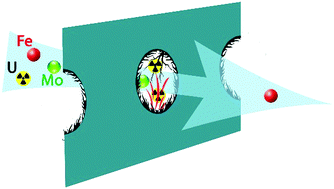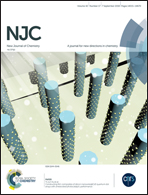Uranium adsorption from sulfuric acid media using silica materials functionalised with amide and phosphorous ligands†
Abstract
Various functionalised silica materials have been investigated as uranium extractants from sulfuric acid solutions. Silica was grafted with zero, one or two amido and phosphonate groups either directly or by peptide coupling. The role of the residual functions (silanol, amine and amide) was evaluated. Our results show that the uranium extraction efficiency of materials bearing residual silanol or amide groups may be affected by the presence of molybdenum. Comparing the performance of materials with different numbers of phosphonic acids on the phosphonate group revealed that only those with a monoacid function extract uranium efficiently. Among these materials, those with a diamido phosphonate ligand demonstrated the highest selectivity for uranium versus iron. Adjusting the length and steric hindrance of the alkyl chains of the amido and the phosphonate group, the best extraction capacity and selectivity versus iron were achieved with a butyl group on the phosphonate and an ethyl group on the ternary amide of the diamido phosphonate ligand. Finally, the [ligand]/[U] ratio was found not to vary with the alkyl chain at the end of the amido group or with the bridge length between the carbamoyl monophosphonate extracting group and the amidopropyl anchor to the silica, suggesting that the extraction mechanism remains unchanged.



 Please wait while we load your content...
Please wait while we load your content...